I had high hopes for the 39th bread in the BBA Challenge. Most of the other bakers had good things to say about it. Plus, the Dutch Crunch topping, made with a mixture of rice flour, a little bread flour, yeast, sugar, salt, vegetable oil and water sounded so good. So, I set out to make the Vienna Bread.
I began the process of making this bread about 6 days before I planned to bake the bread. I wasn’t able to find diastatic barley malt powder locally and I didn’t want to order it online, so I decided to sprout some wheat grains and make my own malt powder.
Making Diastatic Malt Powder using Sprouted Wheat Grains
It took about 3 days for the wheat to sprout, then another day to dry the sprouted grains so I could grind them in my bread mill without clogging it up.
If you’re interested in learning how to sprout wheat grains, refer to my post on sprouted wheat bread.
Just for kicks, here is a comparison of the dried sprouted grains versus regular grains that haven’t been sprouted. The dried sprouted wheat is on the left.
After I dried the sprouted grains, I ground them in my bread mill. Here is the freshly ground diastatic malt powder.
Making the Pre Ferment
Now, it was time to make the Pâte Fermentée, but there was a slight problem. The formula for the Pâte Fermentée makes 18 ounces and this bread only uses 13 ounces. So right off the bat, this bread was making me work.
In order to get the right percentages, I had to scale the amounts. Fortunately, Phyl Of Cabbages & King Cakes provided an easy breakdown of how to use baker’s math to do this step. Thanks Phyl!
So, I made the Pâte Fermentée, let it rest for 2 hours, then put it in the refrigerator overnight. For a step-by-step breakdown of how to make Pâte Fermentée, check out my post on French Baguettes.
The next day, I took the Pâte Fermentée out of the refrigerator, cut it into pieces, covered it with plastic wrap and let it sit on the counter for an hour to take off the chill.
Making the Dough
Stir together the dry ingredients. Add the Pâte Fermentée pieces and the liquid ingredients.
Then stir everything with a Danish dough whisk (or your mixer if you must) until the dough comes together to form a ball.
Transfer the dough to a counter sprinkled with flour and knead it for about 10 minutes to make a firm but supple dough. It should be slightly tacky but not sticky. Transfer the dough to a lightly oiled bowl and roll the dough around to coat it with oil.
Cover it with plastic wrap and let it ferment at room temperature for 2 hours.
Shaping the Loaves
Remove the dough from the bowl and divide it into 2 pieces.
Shape the pieces, into boules. Spray them with cooking spray, cover with plastic wrap and let them rest on the counter for 20 minutes.
Shape the pieces into batards, then transfer them to a parchment lined baking sheet sprinkled with semolina or corn meal.
For step-by-step instructions on shaping batards, refer to the Tuscan Bread post.
Proofing the Loaves
Brush the Dutch Crunch on the loaves. Brushing the crunch topping on before proofing is supposed to provide greater separation and mottling; whereas if you brush it on right before baking, the coating is more even.
Mist the dough lightly, cover with plastic wrap, then let the batards proof at room temperature for 60 to 90 minutes, or until about 1 3/4 their original size.
Preparing the Loaves for Baking
Prepare the oven for hearth baking by placing a steam pan in place. Preheat the oven to 450 degrees F.
Right before baking the loaves, mist the loaves with water and dust lightly with bread flour by topping some flour through a sieve.
I was so proud of myself when I did this part because I thought it looked really cool with the dusted flour. Little did I realize that I had just made a mistake. More about that later…
Moving right along… I scored the loaves down the center.
Then put them in the oven to bake. I rotated the loaves about halfway through for even baking.
I let them continue baking until they reached a medium brown color. About 30 minutes total baking time.
Then I transferred the loaves to a cooling rack to cool for about an hour before I got to taste them.
Here are the finished loaves. I was so proud of the way they looked, I just couldn’t wait to cut a slice and taste it.
So, I sliced a loaf and took a bite!
Boy was I ever disappointed! I couldn’t taste anything but flour. My taste tester tried it and said it tasted dusty. I thought it was the Dutch Crunch Topping that we didn’t like and I was wishing I had made one without it so we could compare, but I finally realized it was the flour I had dusted on the loaves just before baking them. Remember, I said I made a mistake. Well, I shouldn’t have dusted the flour since I was using the Dutch Crunch. Oh well! That’s what I get for trying to do too many things at once. I’m sure you never do that, right?
I had another slice warm with butter and it tasted better, but I just really wasn’t thrilled with it. My taste tester liked the bread and said I was being too hard on it. Since he liked it, I sent the rest of the loaf home with him and froze the other one.
It’s a beautiful bread and I worked really hard on it so I’m sending it over to be YeastSpotted. Please visit Wild Yeast to view all of the lovely breads in the roundup.
I do plan on make the Vienna Bread again sometime because I don’t think I gave it a fair shot. Next time, I’ll make one loaf with and one without the Dutch Crunch and reduce the amount of Dutch Crunch made. As some of the other bakers have mentioned, it makes more than you need for these loaves.
Happy Baking!
Cathy
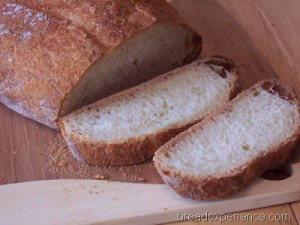
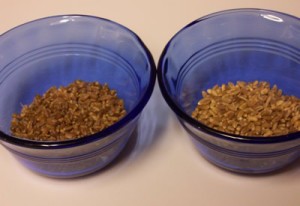
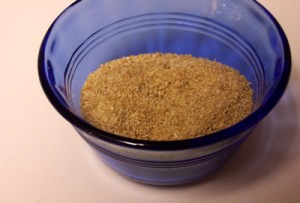
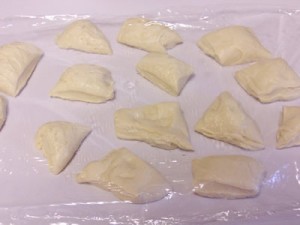
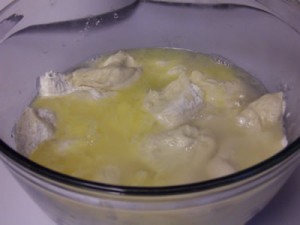
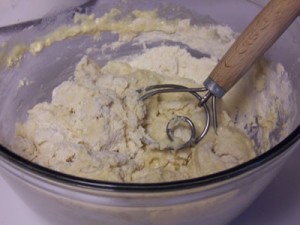
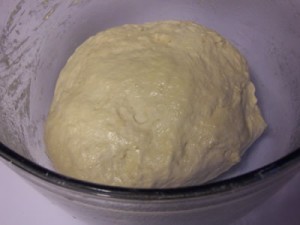
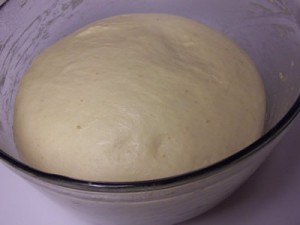
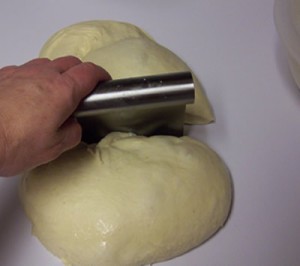
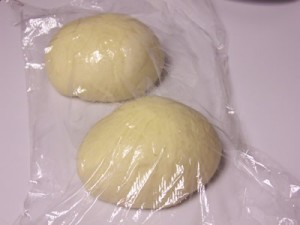
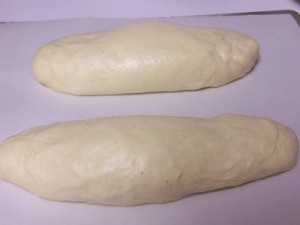
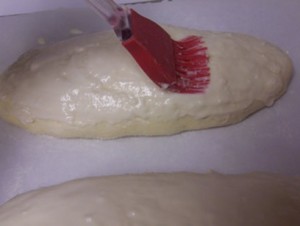
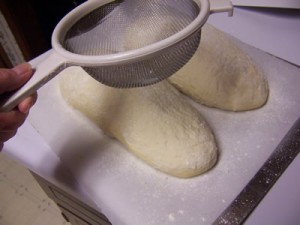
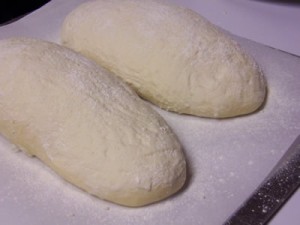
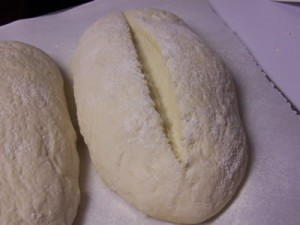
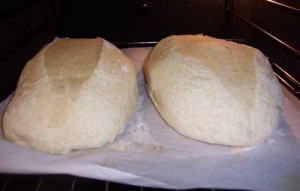
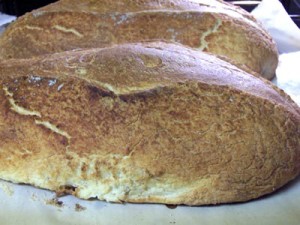
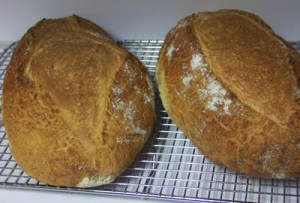
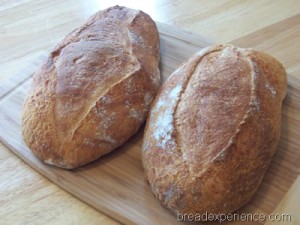
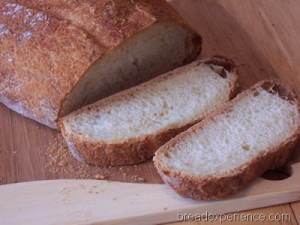
Natashya KitchenPuppies says
It did make a lot of Dutch crunch – me not having any experience with the Dutch crunch.. I put most of it on – very crunchy!
Your bread looks great, sorry it was a little too floury on top. We live and learn. 😉
Ps, I just got a Danish whisk! Ordered it with my new brotforms. So exciting!
bunkycooks says
Wow! That is a lot of work. I guess I know why I don’t make bread often! 😉 It looks impressive, no matter what!
Cathy (breadexperience) says
I enjoyed making this bread eventhough it was a good bit of work. Next time I won’t dust it with the flour.
Mary J says
Yummy looking bread, especially the topping.
Will be giving this bread a try in the next few
days.. have all ingredients except rice flour &
if I can’t find it, will use cream of rice cereal,
as stated in BBA bread book. Thanks for sharing
your experience.
Anonymous says
Your loaves are beautiful!
Connie says
Hi Cathy,
I also want to make diastatic malt powder, I can’t buy it over here. I think I bought barley, but are not sure. It looks rounder than wheat berries.
I’ve tried for 2 days already. I refresh the water regularly but no sprouts come out. I true it away because it smelled.
What do you suggest?
Cathy (breadexperience) says
Hi Connie, I didn’t have any problems sprouting barley grains. I did a post on sprouted barley bread using purple barley grains if you want to see what it looks like. It didn’t smell as far as I remember. http://breadmakingblog.breadexperience.com/2011/05/sprouted-barley-bread.html